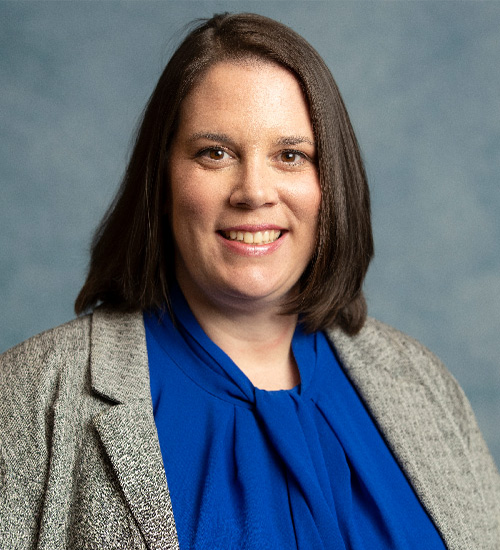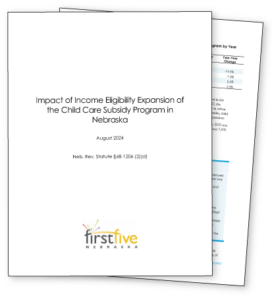Child Care Subsidy Expansion Impact Study
We asked Nebraskans how expanded access to the child care subsidy has affected their families, businesses and communities. Now we’re ready to share what we learned.
How did LB485 expand subsidy access?
For the past 20 years, Nebraska has had some of the nation’s most restrictive income eligibility requirements for child care subsidy benefits. That changed in 2021, when lawmakers passed LB485, temporarily raising families’ income eligibility so more Nebraskans could qualify for benefits through the child care subsidy.
Under LB485, the income eligibility for subsidized care increased from 130% to 185% of the Federal Poverty Level (FPL). Similarly, eligibility for transitional child care assistance increased from 185% to 200% FPL. The new eligibility requirements remain in effect until October 1, 2026, after which they are scheduled to return to their previous levels.
Studying the effects
Expanded access to the child care subsidy can have potentially significant economic and social effects for families, child care providers and communities. LB485 required a study of these effects so state lawmakers could determine whether the expanded eligibility requirements should remain in effect after they are scheduled to expire in October 2026.
First Five Nebraska led this study in collaboration with the Nebraska Department of Health and Human Services as well as other researchers and child care subsidy experts.
What we learned
Over the past two years, the Child Care Subsidy Impact Study team met with parents, providers and other stakeholders from across the state to understand the effects on household finances, employment decisions, child care program operations and revenues, and community-wide outcomes. Those conversations revealed a complex story what the eligibility changes meant in the context of post-pandemic inflation, child care workforce shortages, administrative barriers and other challenges.
Some of the key takeaways:
- If the current income eligibility limits (185% FPL) were to revert to their previous level (130% FPL), Nebraska would rank 50th in the nation for subsidy access based on family income.
- Expanded eligibility requirements enabled an additional 2,562 families to qualify for the child care subsidy between 8/2021 and 9/2023.
- Researchers estimate a $5.81M to $8.93M economic impact from newly eligible families (FY2022-23) who enrolled in the subsidy. This estimate includes up to $3.99M in additional labor income.
- Since 2019, there are 588 fewer child care programs serving families through the subsidy.
Impact of Income Eligibility Expansion of the Child Care Subsidy Program in Nebraska
Impacto de la expansión de la elegibilidad por ingresos del programa de subsidios para el cuidado infantil en Nebraska
Legislative Summary Report
Informe resumido legislativo
PDF 29 pages | PDF 29 páginas
Technical Report
Informe técnico
PDF 141 pages | PDF 141 páginas

Dr. Katie Bass
Policy Research Manager
kbass@FirstFiveNebraska.org
Phone: (402) 261-9671 ext. 104

